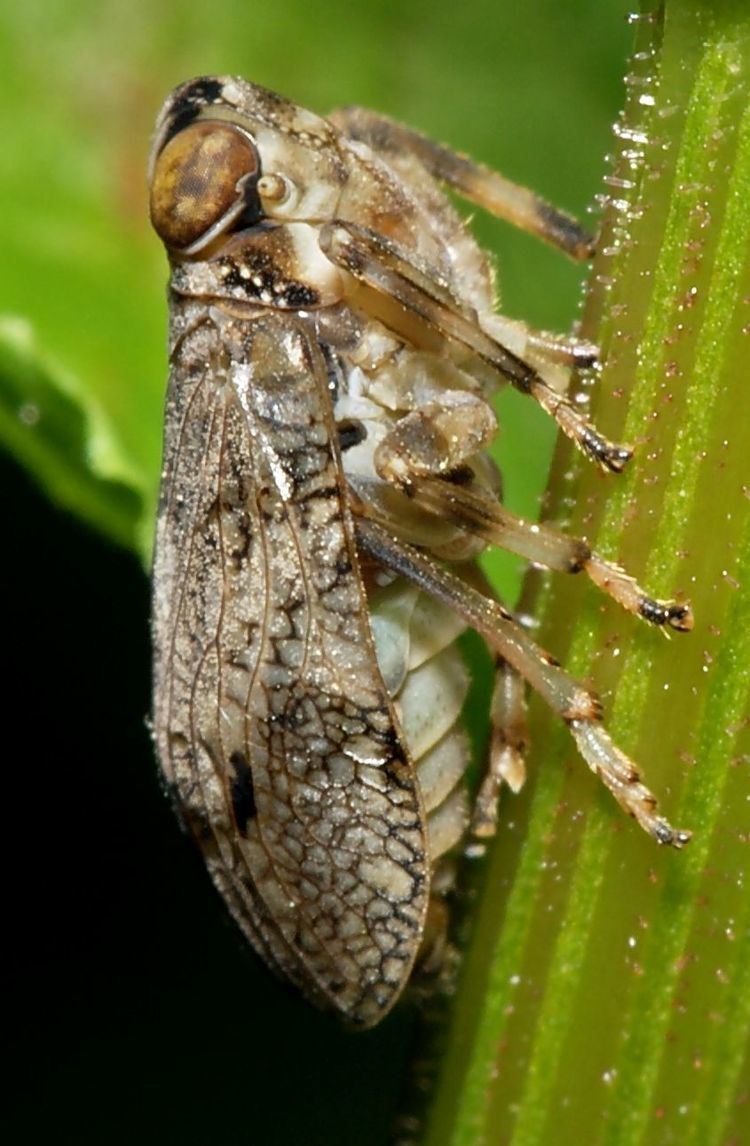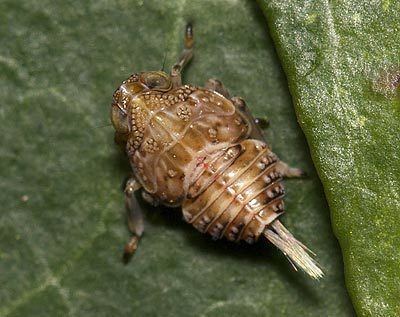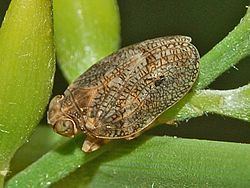Scientific name Issus coleoptratus Higher classification Issus Order True bugs | Genus Issus Rank Species | |
 | ||
Similar Issus, Insect, Issidae, True bugs, Aphrophora alni | ||
Issus coleoptratus
Distribution and habitat

This common species can be found in the western Palaearctic ecozone, in the Near East and in North Africa. These insects live on shrubbery and on foliage of various woody plants and common deciduous trees and in mixed forests (forest edges and parks).
Description

Issus coleoptratus can reach a length of 5.5–7.0 millimetres (0.22–0.28 in). The coloration of these planthoppers can vary from light brown and olive to nearly black. The head, including the eyes, is narrower than the pronotum. The forehead is usually dark brown to black in the upper third, with lighter spots. In the lower area it is greenish, yellowish or brownish. The leathery wings usually show a huge number of dark brown cross-veins with a dark brown discal spot and some evidence of banding. The forewing veins of males and females differs (sexual dimorphism), as they are effaced distally in the female, while in males they are throughout prominent. This species is very similar to the much rarer Issus muscaeformis.
Biology

These insects are unable to fly, unlike most members of their family. They feed on the phloem of different trees, such as lime trees (Tilia species), oaks (Quercus species), maples (Acer species), birches (Betula species), elms (Ulmus species) and hazels (Corylus species). There is only one generation per year. Adults can be found from May to mid October, depending on location. The larvae overwinter on ivy (Hedera species), privet (Ligustrum species), juniper (Juniperus species) and Taxus species.

Like all planthoppers, the nymphs of this insect have a small, gear-like structure on the base of each of their hind legs. These gears have teeth that intermesh, keeping the legs synchronized when the insect jumps, preventing it from spiraling. This is the first planthopper species in which the function of these gears was described, though their existence had been known for decades. The insects shed this gear before moulting into adults.

